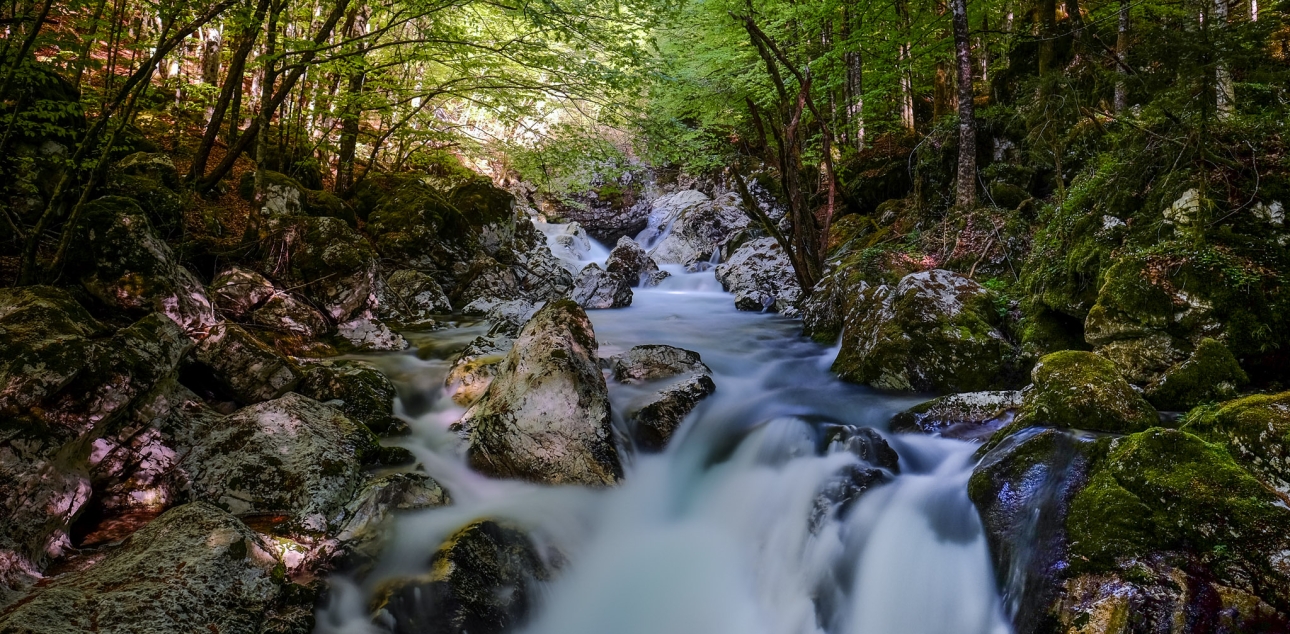Springs continue into streams that can cut deep into the surface, forming steep gorges, canyons, and troughs. The waters in these areas are characterized by torrential flows, as they rise quickly during heavy rains and may even dry up during droughts.
The water temperature in the springs remains constant throughout the year and is equal to the average annual temperature of the nearest settlement.
Due to the harsh living conditions, only small algae, mosses, amphipods, and insect larvae can survive in them.
In the upper riverflow, due to the speed of the water, there is not much life, but in the lower riverflow, where calm pools are formed, we can find a variety of organisms. When the waters free themselves from their cramped environment, they spread across wider valleys. The largest rivers in the park are the Sava Bohinjka, Sava Dolinka, and Soča. The banks are covered with alders and willows, while pioneer communities thrive on the gravel beds, and fish swim in the water.
Human activities, such as altering watercourses, various discharges, and recreational activities, significantly threaten this fragile habitat.
DO YOU KNOW?
- The lowest point of Triglav National Park is in the gorges, carved by the Tolminka River.
- The Sava Dolinka springs in Tamar. It then immediately disappears underground and reappears near Rateče.











